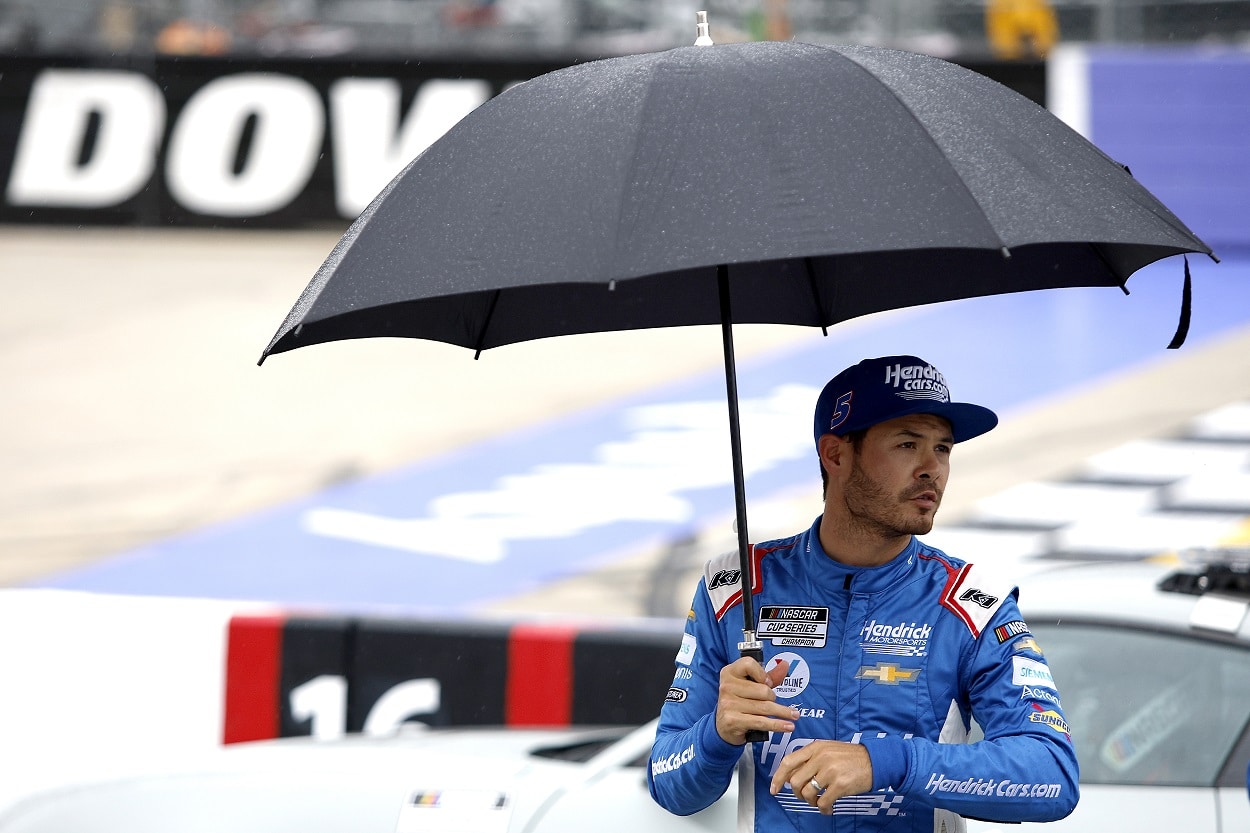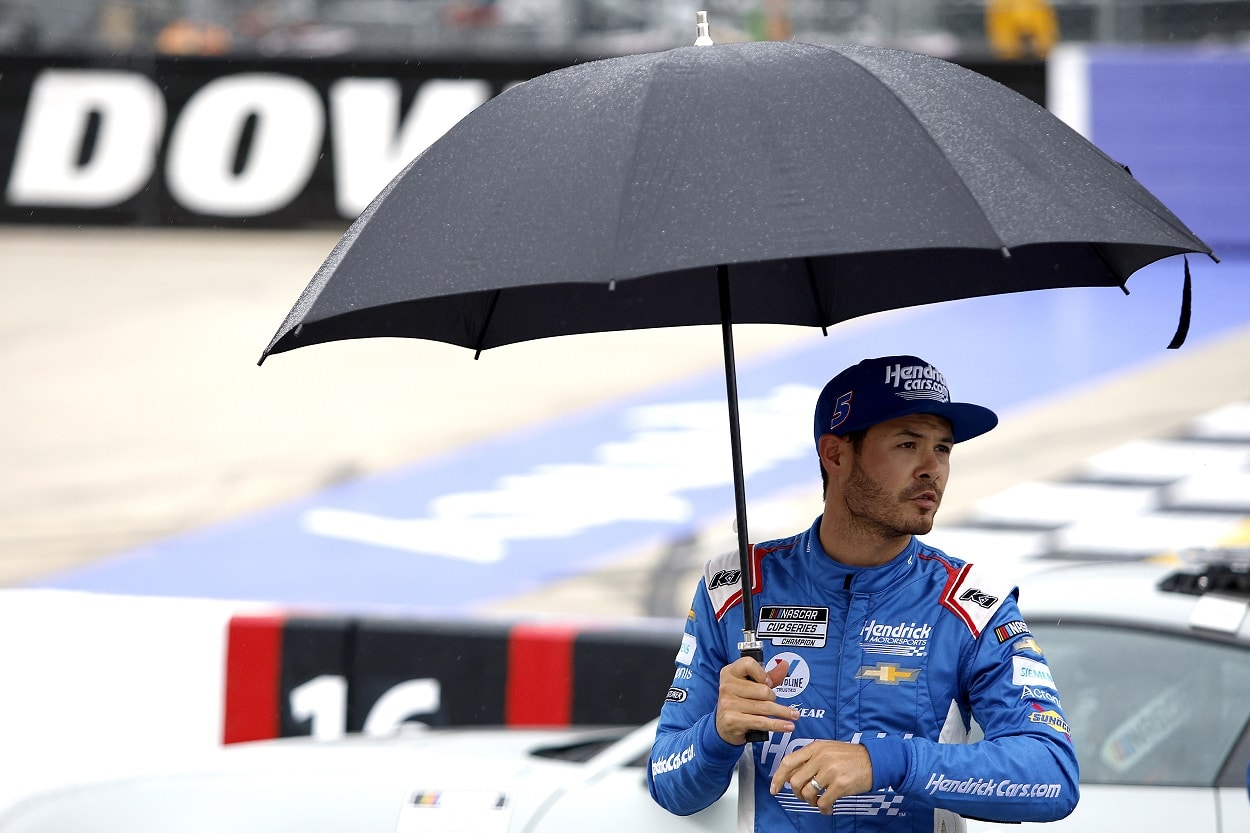NASCAR
NASCAR Is Moving Forward With a Game-Changing Solution to One of Auto Racing’s Biggest Problems

NASCAR may have found at least a partial solution to one of its oldest problems. And even if it’s not a perfect fix, it’s an answer worth exploring.
Rain and inclement weather are one of the few things that can bring a sport built on speed to a halt, but it does so routinely at least a handful of times throughout each season.
Poor weather affected several races in 2022
The 2022 NASCAR season had its fair share of weather-impacted events.
Perhaps most notably, rain pushed back the Cup Series regular-season finale at Daytona International Speedway from a Saturday night race to a Sunday afternoon event. The race ran green until Lap 139 of 160 when another rain shower hit Turn 1 as the field drove into the corner at nearly 200 mph, causing a 13-car pileup and an ensuing rain delay that lasted more than three hours.
Rain also ended the September Xfinity Series race early at Kansas Speedway and interrupted the middle of the Cup Series playoff race two weeks later at Texas Motor Speedway, among others throughout the year.
The Cup Series visit in August to Watkins Glen International in upstate New York was different, however. Rain still caused the start of the race to be delayed, but the cars were able to take to the track before it was completely dry and still start the race.
That’s because, in recent years, NASCAR has worked with Goodyear to develop a wet weather package that allows the cars to race on a wet race track at road courses.
NASCAR has already held races in wet weather multiple times at road courses
The system isn’t perfect, as the sanctioning body found out the year before when it tried to run the inaugural Cup Series race at the Circuit of the Americas in Austin, Texas.
Rain fell for nearly the entirety of what was supposed to be a 68-lap event. Multiple big crashes resulted from poor conditions that made it difficult for drivers to see through their windshields because of the intensity of the rain. Officials finally called the race complete after 54 laps with Chase Elliott out front.
The first Cup Series experience in rainy conditions came in October 2020 at the Charlotte Roval. The Xfinity Series had run in a downpour the day before, and the Cup Series attempted to do the same early in its event.
The rain did not last deep into the race, so the majority of the event ran as a typical race, with Elliott again the victor.
NASCAR has worked on an oval wet-weather package for nearly two years

Between those events, NASCAR went to work on the idea that wet-weather racing could happen at short ovals where cars do not reach speeds nearly as fast as at speedways more than a mile in length with significant banking.
NASCAR held tests at both the 0.5-mile Martinsville Speedway and 0.75-mile Richmond Raceway in the spring of 2021 to see if a rain package could work on ovals.
“I would say that we could have come in here today and had a complete disaster and walked away from it saying, ‘no, this can’t be done,'” NASCAR Senior Vice President of Racing Innovation John Probst said after the Martinsville test. “I think what we learned today was positive for sure. I think that we just need a little bit of time to go through all the data to figure out what are the next best steps. I would say that we continue the journey, and it looks positive for now. Today could have ended it, but it certainly didn’t do that.”
A Road & Track report in October suggested the sanctioning body plans to move forward with the idea of racing on short ovals in wet weather beginning in 2023. And NASCAR is reportedly in the process of updating its rules for how wet-weather aspects of the cars, such as windshield wipers and flashing lights in the back of the cars, should be situated.
Whether this idea actually turns out to be successful is still to be determined. Teams might be able to place rain tires on their cars while a track such as Martinsville is wet and be just fine. Or it might end up with a terribly disjointed race. Either way, it is an idea still worth a try, so fans don’t have to spend an entire day waiting on the possibility of seeing a race or having to miss the event entirely if it is rescheduled for the following day.
The disaster at COTA in 2021 was far from ideal, but it did allow NASCAR officials to see what they needed to adjust to fine-tune the wet-weather package on road courses. That created the possibility for the 2022 Watkins Glen race to get started long before it otherwise would and the chance for the Xfinity Series to run its entire race in June at Portland International Raceway in the rain.
NASCAR officials have made several bold moves in recent years, many of which have turned out to be beneficial to the sport. Wet-weather racing on short tracks just might be their next one.











